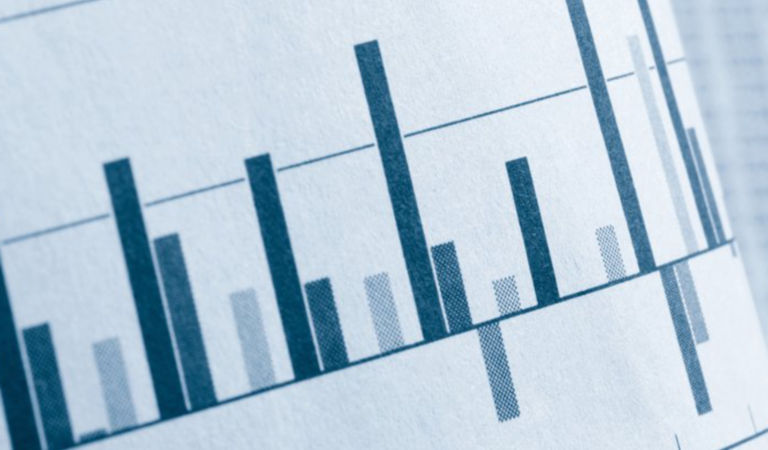Equities
Global equities (+6.5%) soared in January. Investors were encouraged by strong labor reports, moderating inflation, and surprisingly resilient economic growth amid a decline in energy prices. Thanks to record-high temperatures and efforts to find alternative sources of natural gas, wholesale gas prices in Europe have fallen precipitously to levels last seen before the Russia/Ukraine war, easing the threats of blackouts, mass industrial disruptions, and a deep recession. US labor market data showed slower wage growth, stronger-than-expected job gains, and a fall in the unemployment rate to a 53-year low. Inflation in the US and eurozone eased, increasing hopes that central banks can end their hiking cycles soon. Chinese equities continued to surge amid the rapid unwinding of the country’s zero-COVID restrictions and pro-growth policy measures. Markets were increasingly optimistic about the potential for a quick economic recovery in China, which could benefit its trading partners and boost the global economy. Manufacturing and services indicators in China improved, and travel and leisure data showed signs of recovery as people took advantage of a Lunar New Year free of COVID restrictions. Japanese core inflation rose to its highest level in 40 years, as the Bank of Japan (BOJ) purchased a record amount of bonds to defend its yield cap against speculators who believe that the bank will soon raise interest rates.
US
US equities (+6.3%) rallied. Despite considerable uncertainty about the economic outlook and interest rates, easing inflation and solid economic growth in the fourth quarter offered hopes that the US could avoid a painful recession and a substantial increase in unemployment. Short covering was also cited as boosting equities, while renewed interest in the shares of beaten-down technology companies led growth stocks to markedly outperform their value counterparts. US GDP grew at a 2.9% annualized rate in the fourth quarter as resilient consumer spending and inventory expansion helped to offset weaker capital spending and a significant decline in real estate investment. The headline Consumer Price Index rose 6.5% annually (5.7% at the core level) — the smallest increase since October 2021 — and the US Federal Reserve (Fed) signaled that it would slow its pace of rate hikes to 25 basis points (bps) in February. Investors increasingly believe that rapidly cooling inflation, weakening consumer demand, and elevated recession risks will lead the Fed to end its tightening cycle in March before cutting interest rates in the second half of 2023, with futures markets reflecting a year-end policy rate of 4.5%. This view is at odds with the Fed’s consistent messaging that persistent inflation pressures from a robust labor market and stronger-than-expected consumer demand would likely keep interest rates higher for longer, at least through 2023. The US reached its US$31.4 trillion borrowing limit in January, and markets braced for high-stakes negotiations over debt, spending, and fiscal priorities as Congress seeks to raise the debt ceiling.
Economic data released in January showed that the US economy continued to slow under the weight of high interest rates and tighter Fed policy. The labor market remained resilient in December as nonfarm payrolls grew by a robust 223,000, the unemployment rate slipped to 3.5%, and initial jobless claims trended lower. However, cooling wage growth and an uptick in the participation rate suggested that tightness in the job market is beginning to unwind, providing the Fed with greater scope to pursue less restrictive policy in the months ahead. Decelerating consumer spending was a further sign of a weakening economy; retail sales contracted 1.1% in December — the largest drop in 2022 — while personal spending dipped 0.2%, as households spent less on goods and more on services and increased their savings rate. The Conference Board’s Consumer Confidence Index unexpectedly retreated to 107.1 in January, from 109 a month earlier. Consumers’ six-month outlook for the economy fell by the most since June, despite their more upbeat views about current business and labor market conditions. Mortgage rates dropped from a recent two-decade high, bringing some relief to the ailing housing market. In December, new-home construction fell for the fourth straight month and existing-home sales were the weakest in 10 years, although new-home sales rose for the third consecutive month and pending home sales unexpectedly increased. Home-builder sentiment in January increased for the first time in more than a year.
The manufacturing sector contracted for the third straight month as the Institute of Supply Management (ISM) Manufacturing Index declined more than expected, dropping to 47.4 in January. The services sector unexpectedly contracted in December; the ISM Services Index plunged 6.9 points to 49.6 in December on a steep drop in business activity and new orders, signaling that higher interest rates are curbing demand. Encouragingly, 11 out of 18 services industries reported growth, supply-chain performance improved, and prices rose at a considerably slower pace. A separate preliminary survey from S&P Global indicated that services sector output continued to weaken in January, although companies were more optimistic about their expectations for the current year. The National Federation of Independent Businesses Small Business Optimism Index fell to nearly a 10-year low in December amid deteriorating expectations for the economy and earnings.
Eight of 11 sectors in the S&P 500 Index (+6.3%) posted positive results. Consumer discretionary (+15.0%) was the best-performing sector, driven by internet & direct marketing retail (+22.5%) and automobiles (+35.3%). Communication services (+14.5%) was another notable outperformer, led higher by interactive media & services (+14.9%). Information technology (+9.3%) rose, most notably semiconductors & semiconductor equipment (+15.9%). Utilities (-2.0%) was the worst-performing sector. Health care (-1.8%) also declined, led lower by pharmaceuticals (-5.3%) and health care providers & services (-3.4%).
Europe
European equities (+7.0%) enjoyed a positive start to 2023 as the region’s economy proved more resilient than previously feared. Preliminary GDP figures showed that the eurozone economy grew 0.1% in the fourth quarter, better than consensus estimates of a 0.1% decline and down only 0.2% from the prior quarter. While economists forecast weak European economic growth in 2023 and recession risks remain, several factors could help to bolster the region, including low inventories, excess savings, strong labor markets, and China’s reopening. Eurozone headline inflation eased for a third consecutive month, rising 8.5% year over year, largely due to a decline in energy prices. However, a narrow measure of core inflation closely monitored by the European Central Bank (ECB) held steady at 5.2%, highlighting the persistence of underlying price pressures. Markets widely expect the ECB to raise interest rates by 50 bps in February, but the bank’s president, Christine Lagarde, brushed off speculation that the pace of rate hikes would slow to 25 bps in March. Record-high temperatures and elevated gas storage levels defused Europe’s energy crisis. Energy prices increased 17.2% annually in January, down significantly from 25.5% in December, providing meaningful relief to consumers and businesses.
Macroeconomic data provided further evidence that the eurozone economy is stabilizing. The manufacturing sector contracted at a slower pace as the eurozone Manufacturing Purchasing Managers’ Index (PMI) rose to a five-month high of 48.8 in January. The rate of decline in output moderated, business optimism continued to brighten, and supply-chain constraints abated considerably. The preliminary eurozone Composite PMI for January showed that services sector activity expanded for the first time since July 2022. In January, eurozone economic sentiment among businesses and consumers increased to a seven-month high, underscoring optimism that the region could avoid recession.
In the UK (+4.1%), weak macroeconomic data indicated that a recession is likely. Consumer confidence dropped to near-historic lows, retail sales contracted at an accelerated pace, credit conditions remained tight, and housing-market indicators contracted. Core inflation held steady at 6.3% in December, and wages continued to rise, increasing pressure on the Bank of England (BOE), which is expected to raise interest rates by 50 bps in February.
In Germany (+10.5%), fourth-quarter GDP unexpectedly contracted 0.2%, as high inflation crimped demand. The ZEW Indicator of Investment Sentiment in December entered positive territory for the first time in almost a year, signaling a notable improvement in expectations for the economy over the next six months.
Pacific Basin
Pacific Basin equities (+5.1%) ended higher. Australia’s (+6.5%) inflation in the fourth quarter accelerated at the fastest pace in 32 years, exceeding forecasts and prompting money markets to price in a 25 bps interest-rate hike in February. The headline CPI advanced 7.8% from a year earlier, exceeding consensus estimates of 7.6% but slightly below the Reserve Bank of Australia’s forecast of 8%. In 2022, the housing market suffered its largest annual decline since 2008, as sharply higher interest rates curbed purchases; the National Home Value Index fell 5.3%, driven by a 12.1% slide in Sydney’s home prices and an 8.1% drop in Melbourne. Consumer confidence in January improved by the most since April 2021 but remained depressed. A measure of business conditions in December moderated for the third straight month, while business confidence remained firmly in negative territory.
In Singapore (+5.6%), a preliminary estimate of the GDP showed that the economy expanded 2.2% year over year in the fourth quarter, down markedly from 4.2% in the prior quarter. Hong Kong’s (+4.2%) economic outlook for 2023 brightened amid expectations for a recovery in China and a rebound in tourism. However, the GDP contracted for the fourth straight quarter, dropping 4.2% compared to a year earlier. In New Zealand (+5.6%), business confidence slumped to the lowest since the 1970s, as prospects of higher interest rates and weaker demand may lead to a potentially deeper recession. Expectations for profits, investment, and hiring tumbled, with labor shortages continuing to weigh on business activity. Chris Hipkins became the country’s new prime minister after Jacinda Ardern unexpectedly resigned amid declining support for the Labour government. Hipkins said that addressing the high cost of living is the top priority for his government.
In Japan (+4.7%), the core CPI rose 4.0% year over year in December — the highest in more than four decades — as lofty hospitality, food, and energy costs drove inflation twice as high as the BOJ’s 2.0% target. In addition, the Producer Price Index rose at a higher-than-expected annual pace of 10.2% in December, driven by a renewed rise in commodity prices. Inflation-adjusted wages declined 3.8% annually in November, magnifying the urgency of Prime Minister Fumio Kishida’s push for wage hikes that exceed inflation. Higher output and new orders in the services sector lifted the preliminary Composite PMI into expansionary territory in January, although the manufacturing sector continued to contract. The BOJ purchased a record US$182 billion worth of bonds to defend its yield cap against speculators who believe that the bank soon will phase out its massive monetary stimulus program.
Emerging Markets
Emerging markets (EM) equities (+6.6%) rose in January as cooling inflation pressures, coupled with China’s reopening, supported markets. Within EM, Asia outperformed Latin America and Europe, the Middle East, and Africa (EMEA).
Asia equities (+7.2%) surged as subsiding COVID cases in China (+11.7%) helped to accelerate the country’s reopening momentum. China’s rapid shift away from stringent COVID measures and a pro-growth policy stance continued to fuel a powerful rally in equities, which attracted record monthly foreign inflows in January. Faster-than-expected normalization in the economy added impetus to the nascent recovery. Economic data released in January — the first since pandemic restrictions were lifted — was favorable; domestic consumption improved, manufacturing purchasing managers’ indices advanced into expansionary territory, and nonmanufacturing activity soared amid a seasonal spending splurge for the Lunar New Year holiday. However, China still faces headwinds from weak external demand, with exports in December dropping 9.9% from a year earlier. Additionally, regulators sought to revive the ailing property sector with a series of supportive measures following a 30.8% year-over-year plunge in home sales in December. Taiwan (+10.1%) and South Korea (+9.5%) were buoyed by China’s accelerating recovery despite increased geopolitical tensions in the region. Ongoing weakness in the semiconductor cycle drove South Korean exports down 9.6% annually in December. Encouragingly, the pace of decline slowed to 2.7% in the first 20 days of January, with China’s reopening offering hopes for further improvement.
Latin American equities (+5.9%) moved higher. Mexico (+12.9%) generated strong returns as the North American Leaders’ Summit pointed to stronger cooperation and closer economic ties between Mexico, the US, and Canada. Inflation softened in Chile (+3.6%) and Brazil (+3.2%). Brazil contended with violent protests over President Luiz Inácio Lula da Silva’s transition of power, culminating with attacks on the presidential palace, Congress, and Supreme Court buildings. The president proposed a package of tax increases and spending cuts aimed at reducing the country’s deficit. Peru (+7.9%) was rocked by political turmoil and persistent protests, with calls for President Dina Boluarte’s resignation coming only one month after the arrest of former President Pedro Castillo.
EMEA equities (+2.9%) rose as inflation pressures ebbed. South Africa (+7.2%) advanced despite a severe and prolonged energy crisis that is damaging the country’s economic growth and increasing the risk of recession. In Poland (+5.4%), Prime Minister Mateusz Morawiecki helped drive forward European negotiations to supply tanks and additional military defense assistance to Ukraine. The Czech Republic (+17.1%) soared after the central bank provided a favorable outlook for inflation, while former NATO General Petr Pavel was elected president.
Fixed Income
Most fixed income sectors outperformed government bonds in response to easing inflation signs in the US and Europe and expectations that major central banks are approaching the end of their rate-hiking cycles. Warmer weather in Europe, lower natural gas prices, and China’s reopening added to the optimism.
US economic data releases were mixed, underscored by improved consumer sentiment amid a solid labor market and signs of easing inflation. Consumer-facing industries led in job creation, unemployment rate fell to a five-decade low, and nonfarm payroll gains exceeded expectations. A drop in energy prices, particularly gasoline, helped to curb headline inflation. Retail sales recorded declines in most categories as personal spending fell. Manufacturing activity contracted on weak demand for new orders, with new aircraft orders the notable exception. Wholesale inventories increased as higher borrowing costs depressed sales. Housing data was largely unfavorable. Existing-home sales fell, particularly in the Northeast, South, and Midwest regions, while housing starts and building permits declined, led by a drop in multi-unit construction. In Europe, the eurozone manufacturing PMI inched higher but remained in contraction territory. Headline inflation moderated as energy prices eased and mild winter weather reduced energy demand. Germany’s ZEW Financial Market Survey expectations improved, aided by stabilizing energy markets. UK services PMI slowed more than forecast amid labor shortages and rising costs of living, while manufacturing improved slightly. China’s GDP grew more than forecast year over year in the fourth quarter, despite strict COVID-19 policies. Japan’s inflation growth outpaced expectations, while low manufacturing orders dragged down core machine orders. The Canadian unemployment rate dropped, supported by an increase in full-time positions and wage growth.
Fed rhetoric appeared to support a slower pace of policy tightening. The Bank of Canada hiked interest rates by 25 bps and announced a pause in future rate increases over the near term. The BOJ kept its yield curve control (YCC) range unchanged. Most global sovereign yields fell sharply as moderating inflation increased expectations that major central banks might be nearing an end to their rate-hiking cycle. US Treasury yields fell precipitously, as slowing wage growth and moderating inflation bolstered views that the Fed may soon complete its policy tightening. In Europe, disinflationary surprises in the German and French Harmonized Index of Consumer Prices precipitated a rally in sovereign bonds, even as the ECB’s governing council reiterated its hawkish rhetoric. The 10-year Japanese government bond yield declined after the BOJ retained its current policy settings but ended the month slightly higher, close to the current YCC target. The Bloomberg TIPS index delivered a total return of 1.83%, and the 10-year breakeven inflation rate decreased by 5 bps, to 2.25%, during the month.
Global credit bonds outperformed duration-equivalent government bonds as spreads tightened. Within securitized sectors, agency mortgage-backed securities, commercial mortgage-backed securities, and asset-backed securities outperformed duration-equivalent government bonds. Within EM, local markets debt (+4.29%) outperformed external debt (+3.17%), in US-dollar terms. Spread narrowing contributed favorably to results within external debt, and a decrease in US Treasury yields also had a positive impact. Appreciation in EM currencies drove positive performance in local markets, and movement in EM rates also helped results.
Currencies
The US dollar declined versus most major currencies as moderating US inflation strengthened the view that the Fed’s tightening cycle is nearing an end. The Australian dollar led the gains within G10, buoyed by a larger-than-expected increase in retail sales and inflation. The British pound advanced, with a tight labor market raising the probability of a 50 bps rate hike at the BOE’s February meeting. Even as the Bank of Canada raised its policy rate and signaled a “conditional pause” in tightening, the Canadian dollar rose following strong labor-market data. The Japanese yen gained despite the BOJ’s surprisingly dovish YCC target amid sharply elevated inflation pressures. The Norwegian krone underperformed following a swifter-than-anticipated slowdown in headline inflation. Most EM currencies strengthened against the US dollar. Chinese-linked currencies (Chinese yen, Thai baht, Indonesian rupiah) and commodity-linked currencies in Latin America (Mexican peso, Chilean peso, Colombian peso) were the notable gainers. The South African rand underperformed due to concerns about a deteriorating growth outlook amid recurring electricity blackouts.
Commodities
Commodities (-0.1%) declined for the third consecutive month, led lower by energy (-2.2%), which continued to trend downward in January. Gasoline (+3.7%) and gas oil (+2.9%) advanced amid optimism about the demand outlook in China and the possibility that sanctions will restrict supply from Russia. Crude oil (-1.0%) declined as the market awaited signs of a rebound in Chinese demand after zero-COVID restrictions were eliminated. Russian oil sanctions, due to take effect February 5, weighed on heating oil (-0.9%). US natural gas (-34.2%) plunged; fears about suppliers’ inability to meet winter demand were diminished by a confluence of factors, including unseasonably warm weather and cooling exports to Europe.
Industrial metals (+9.0%) enjoyed a strong start to the year as optimism around China’s reopening and a weaker dollar brightened the demand outlook for base metals. Zinc (+14.6%), and aluminum (+11.3%) rose sharply on expectations for a rebound in China’s economy. Copper (+10.5%) was bolstered by persistent concerns about the global supply outlook, as well as prospects for a demand recovery in China — the commodity’s largest consumer. Nickel (+1.1%) also benefited from potentially stronger Chinese demand, in addition to growing expectations that that US interest-rate hikes will abate. Lead (-7.4%) declined during the month as withdrawals from London Metals Exchange warehouses continued, reducing stockpiles to their lowest level since 1990.
Precious metals (+5.4%) were led higher by gold (+6.0%). Bullion has surged since early November as cooler inflation led Fed officials to tone down their hawkish rhetoric, causing the US dollar and bond yields to decline. Silver (-0.5%) saw strong profit-taking in January after it had outperformed gold in November and December.
Agriculture & livestock (+0.2%) ended slightly higher. Coffee (+9.1%) prices surged, with worries about tight global supplies underpinning prices. Sugar (+9.0%) rose sharply on short-term supply concerns in India — the world’s second largest exporter. Cotton (+3.8%) prices advanced on a better demand outlook, thanks to hopes for a stronger Chinese economy and declining inflation in the US. Live cattle (+1.4%) and feeder cattle (+0.4%) finished higher, as lower cattle supplies and steady demand continued to support prices. Soybeans (+1.3%) enjoyed a fourth consecutive month of gains, with persistent drought conditions continuing to impact key growing regions. A modest rise in corn (+0.6%) was largely driven by dry weather. Cocoa (-0.3%) was weighed down by weakness in Asian demand and reports of robust output in Côte d’Ivoire and Ghana — the world’s top producers. Wheat (-2.6%) extended its longest streak of monthly losses since 2016; improving export prospects continued to ease concerns about supplies following Russia’s invasion of Ukraine. Lean hogs (-11.3%) slumped amid plentiful supplies and weak export demand.
































Monthly Market Review — October 2025
Continue readingBy